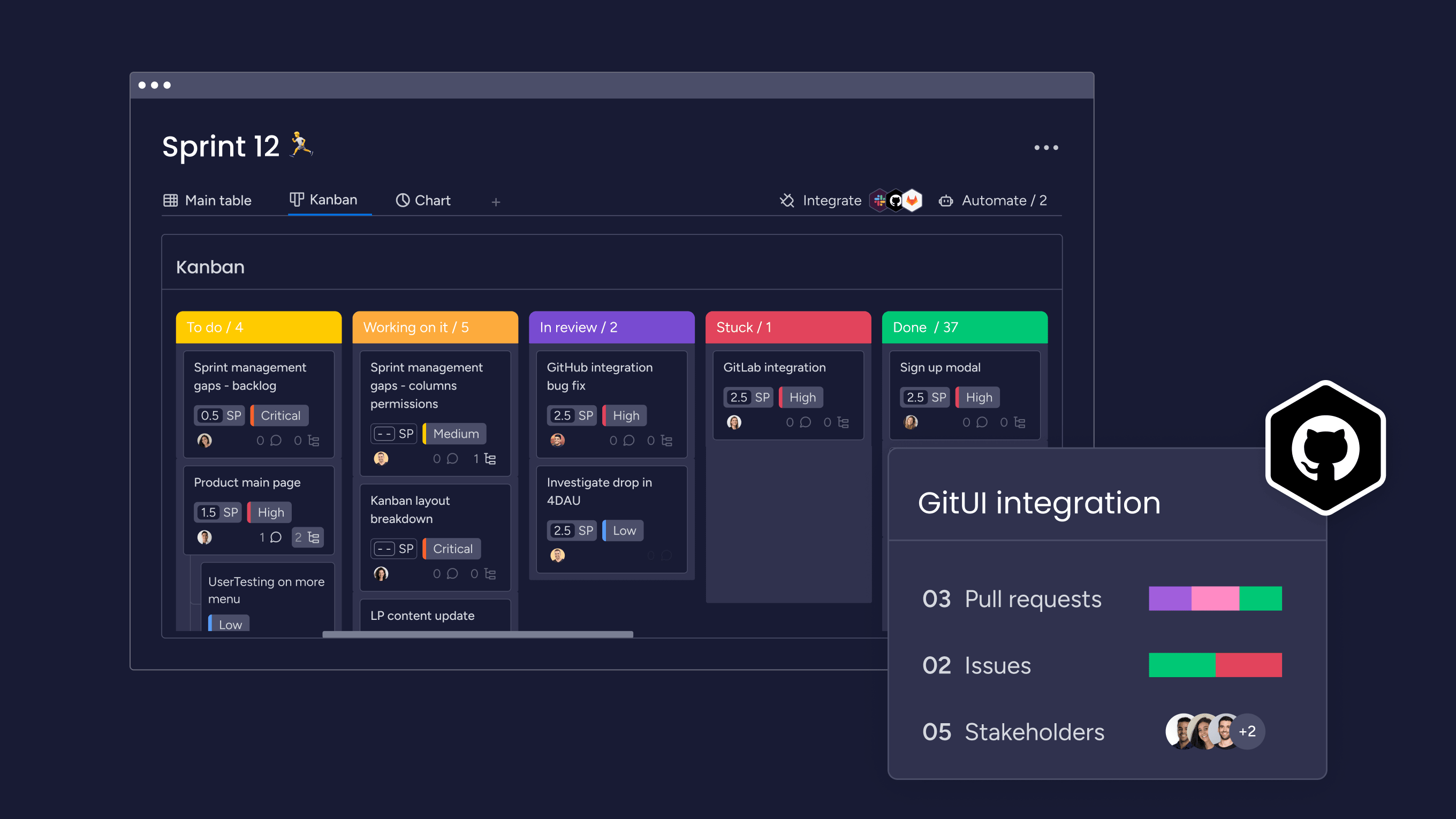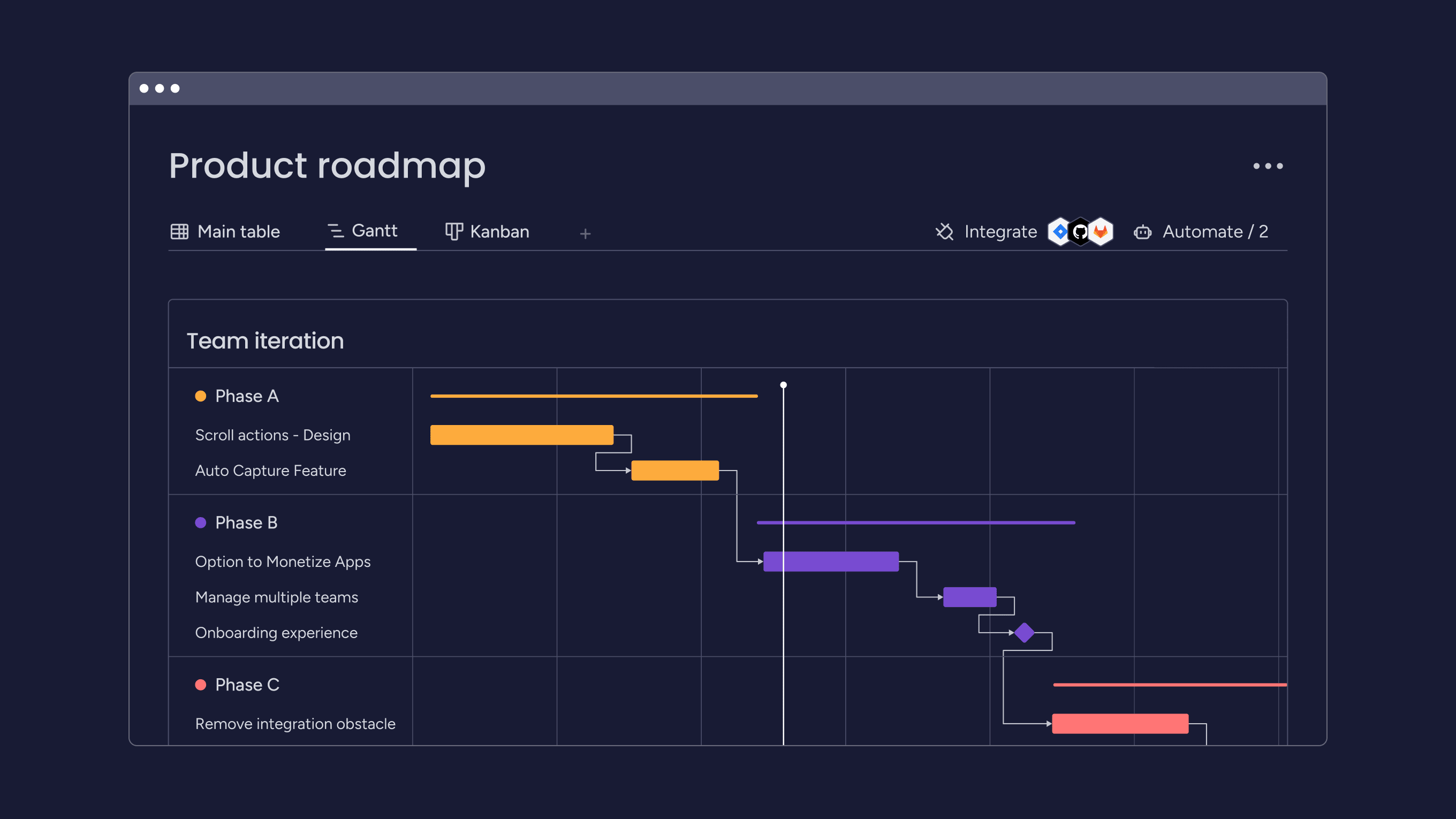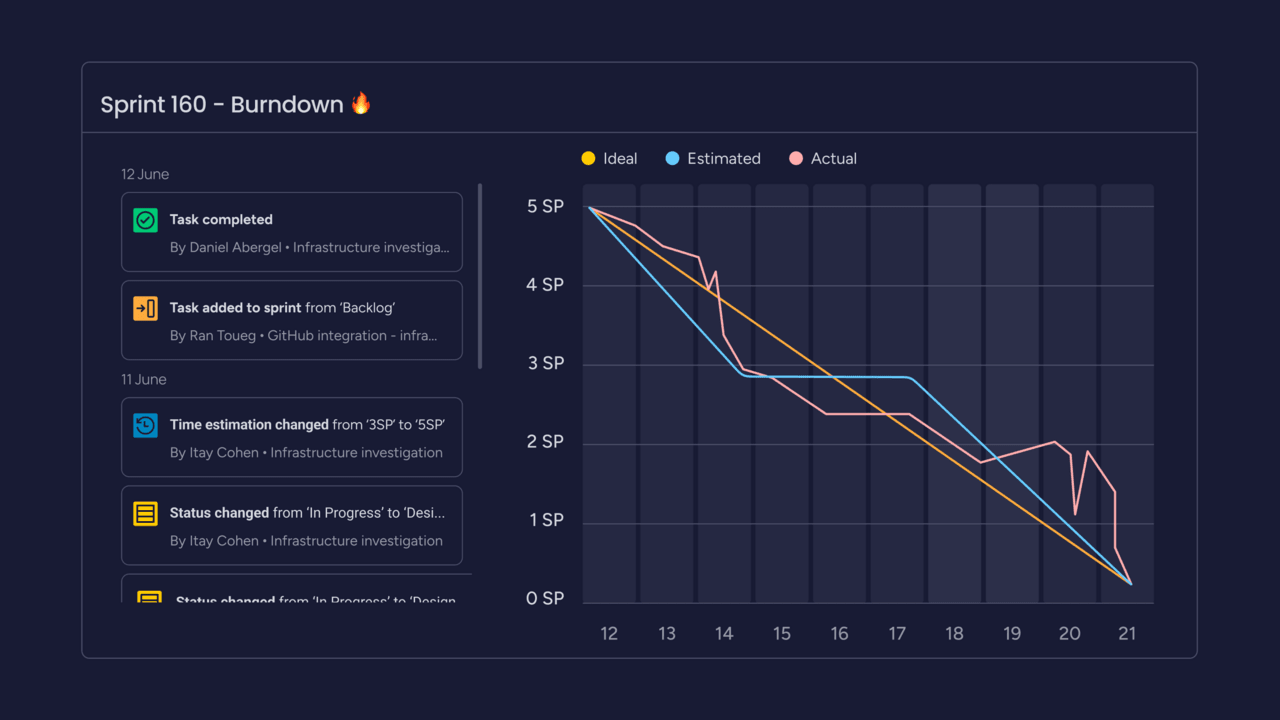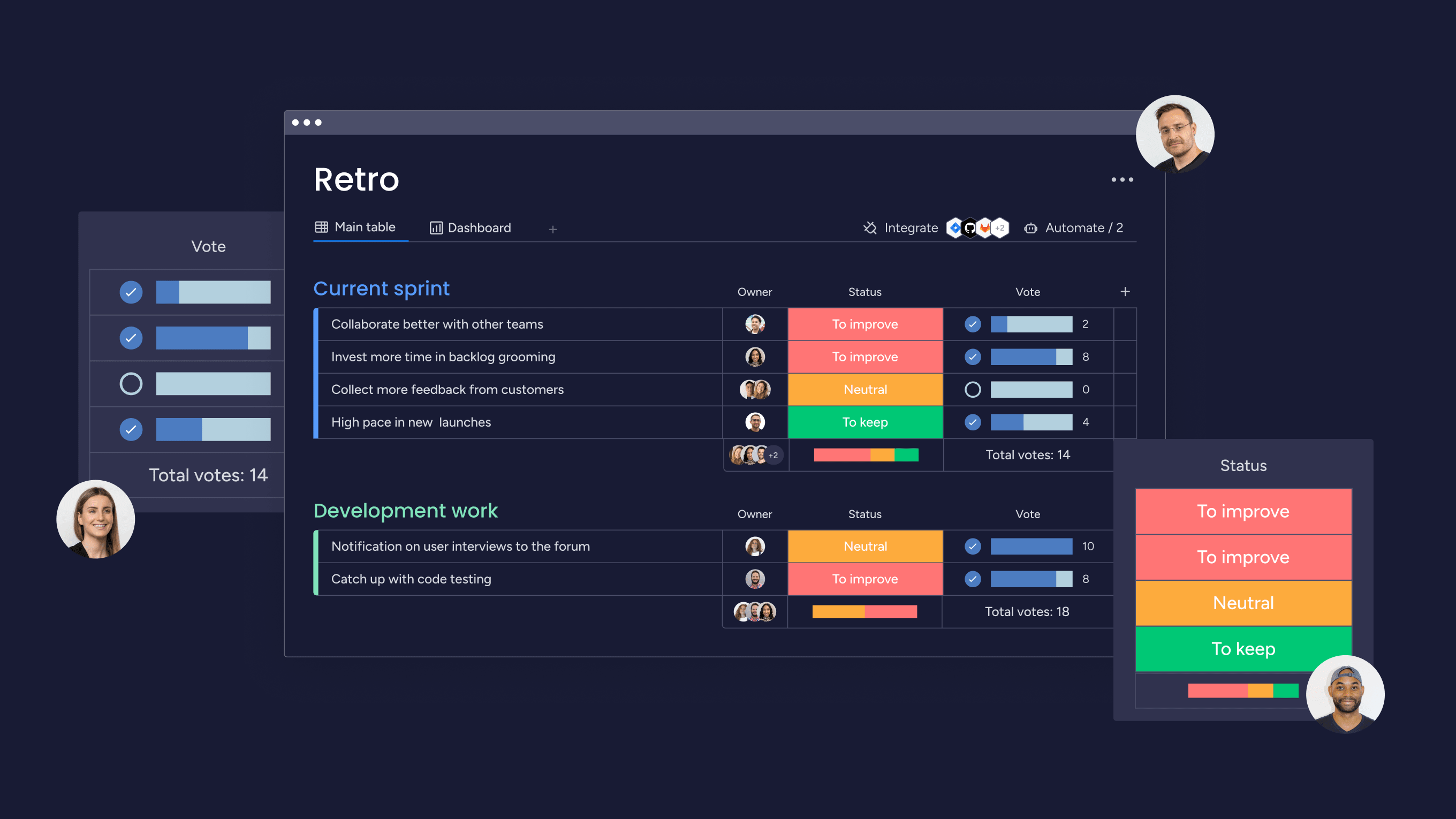In 2025, the difference between teams that lead their industries and those that fall behind often comes down to adaptability. Teams stuck in rigid, long-term plans discover their work is outdated before it ever reaches customers. Others, who deliver value quickly, respond to feedback, and adjust with confidence, are the ones winning market share. The real difference is not just process. It is an operational and cultural shift.
That shift is agile transformation. It is more than adding new ceremonies like daily standups. It means rethinking mindset, culture, and ways of working. Traditional top-down structures give way to cross-functional teams that are empowered to deliver faster and adjust as customer needs evolve.
This guide unpacks what a successful agile transformation looks like in practice. It covers the benefits, from faster delivery to happier teams, and outlines a clear roadmap for making it happen. It also shares practical strategies to drive change and advice for overcoming the challenges that will come along the way.
Try monday devKey takeaways
- Start with culture, not platforms: Focus on building trust and empowering teams to make decisions before implementing new Agile processes or frameworks.
- Begin small with pilot teams: Choose motivated teams to test Agile best practices, learn what works, and refine your approach before scaling organization-wide.
- Secure executive sponsorship early: Leaders must actively champion transformation and model agile behaviors, not just approve budgets or mandate changes.
- Choose flexible platforms that adapt to your teams: monday dev lets you design custom workflows that match how your teams actually work, then evolve as you improve.
- Measure business impact, not just process metrics: Track outcomes like time-to-market and customer satisfaction alongside development velocity to prove transformation value.
What is agile transformation?
Agile transformation is the process of moving an organization away from rigid, traditional ways of working and toward a more flexible, customer-focused approach. A 2022 McKinsey report highlights why this shift matters, noting that 81% of business leaders now view agile transformation as a top strategic priority.
At its core, the change goes far beyond adopting new ceremonies or frameworks. It redefines how teams collaborate, how decisions are made, and how value is delivered to customers.
In many ways, it is like rewiring the organization’s operating system. Instead of relying on lengthy planning cycles and hierarchical approvals, teams become empowered and cross-functional, able to respond quickly as customer needs and market conditions evolve.
Moving beyond traditional development methods
Traditional development follows a predictable pattern: gather all requirements, create detailed plans, build everything, then release. This waterfall approach assumes you can predict exactly what customers need months in advance.
Agile flips this model. Instead of betting everything on upfront planning, you deliver small pieces of value frequently and adjust based on real feedback. Here’s what changes when you embrace agile methodology:
- Delivery cycles: From months or years to weeks.
- Planning approach: From detailed upfront specs to adaptive planning.
- Team structure: From siloed departments to cross-functional teams.
- Decision making: From top-down approval chains to empowered teams.
The difference between doing agile and being agile
Many organizations get stuck “doing agile” — they run sprints, hold standups, and use agile terminology. But their mindset remains unchanged. Teams still wait for approvals, avoid risks, and focus on following processes rather than delivering value.
Being agile requires deeper change. It means trusting teams to make decisions, viewing failures as learning opportunities, and adopting agile principles that prioritize customer outcomes over internal metrics. When you’re truly agile, the practices become natural extensions of how you think about work.

Why agile transformation matters now
Customer expectations change faster than ever. New competitors emerge overnight. Technology evolves constantly. If your organization takes months to respond to market changes, you’re already behind.
The gap between agile and traditional organizations keeps widening. While you’re planning next year’s features, agile competitors are already learning from their third or fourth iteration, demonstrating a true agile SDLC approach.
The cost of staying with rigid systems
Holding onto traditional approaches creates a chain reaction of problems. Development cycles grow longer as teams wait on approvals, and products end up launching months late, missing critical market windows. Over time, this slows delivery, frustrates stakeholders, and erodes competitiveness.
The impact shows up across the organization:
- Talent retention suffers as top developers leave for companies where they can ship code without constant delays.
- Recruiting becomes harder because skilled candidates seek environments that value autonomy and rapid delivery.
- Costs spiral upward since the lack of agile budgeting leads to money wasted on lengthy cycles, rework caused by unclear requirements, and the upkeep of systems that no longer serve customer needs.
The longer rigid systems remain in place, the harder it becomes to keep pace with markets that reward speed and adaptability.
How modern teams achieve business agility
Business agility is the ability to respond to opportunities and threats in real time. Agile teams make this possible by working in short feedback loops, decentralizing decisions, and delivering value continuously.
This requires more than process changes — it depends on platforms that support agile project management while staying flexible. monday dev provides an agile solution that adapts to the way teams actually work and evolves with them as needs change. With monday dev, teams can:
- Design workflows that reflect their unique context, rather than forcing a one-size-fits-all model.
- Adjust and improve processes over time, using data and feedback to guide changes.
- Connect planning to execution seamlessly, keeping everyone aligned without adding extra overhead.

5 core benefits of agile transformation
Real agile transformation delivers measurable improvements across your entire organization, with research from McKinsey showing that companies see a 30% improvement in operational performance, customer satisfaction, and employee engagement. These gains grow stronger as teams mature in their practices.
The following benefits highlight how agile transformation creates lasting impact when it is put into practice.
1. Accelerated product delivery
Breaking work into smaller increments fundamentally changes delivery speed. Instead of waiting months for complete features, you ship working software every few weeks.
This approach reduces risk by validating assumptions early. When you discover a feature isn’t resonating with users, you’ve thankfully invested weeks, not months.
2. Enhanced cross-team collaboration
Agile breaks down walls between departments. Developers, designers, and product managers work together daily instead of throwing requirements over the fence.
This collaboration happens naturally through agile ceremonies. Sprint planning aligns everyone on priorities. Daily standups surface blockers before they become crises. Retrospectives turn problems into process improvements.
3. Real-time project visibility
Everyone can see exactly what’s happening at any moment. Stakeholders know what teams are building. Teams understand business priorities. Leaders spot issues before they derail projects.
This transparency enables proactive management. You can reallocate resources, adjust priorities, or provide support based on real data, not status reports.
4. Rapid response to market changes
Short development cycles mean you can pivot quickly. When customer needs shift or competitors launch new features, you can respond in your next sprint, not your next annual planning cycle.
This responsiveness creates competitive advantage. While competitors debate changes in committee meetings, you’re already shipping updates based on customer feedback.
5. Improved team satisfaction and retention
Developers want autonomy, mastery, and purpose. Agile provides all three. Teams own their processes, continuously improve their skills, and see direct connections between their work and customer value.
Happy teams deliver superior results. They collaborate more effectively, take ownership of quality, and actively contribute to process improvements.

Creating your agile transformation roadmap
Every organization’s path looks different, but successful transformations share common elements. Your roadmap should provide clear direction while maintaining flexibility to adapt as you learn.
Assessing current development processes
The first step in an agile transformation is understanding how work really flows through your organization. Mapping this journey from idea to production reveals where handoffs, approvals, and delays slow things down.
Key actions include:
- Trace the end-to-end workflow from concept through delivery, noting every step along the way.
- Look beyond official Agile development processes to capture how teams actually communicate and make decisions.
- Identify informal workarounds that teams rely on to keep things moving.
- Document findings without judgment, treating them as a baseline rather than a critique of current inefficiencies.
This clear picture of the present state provides the foundation for meaningful change.
Defining your agile target state
Your target state should address specific organizational challenges while aligning with strategic goals. Consider which frameworks fit your context — Scaled Agile Framework for large enterprises, Scrum for product teams, Kanban for operations, or hybrid approaches for complex environments.
Define success in business terms. Instead of “implement Scrum,” aim for “reduce time-to-market by 50%” or “increase customer satisfaction scores by 20 points.”
Create a vision that excites people. Help teams understand how agile transformation will make their work more meaningful and impactful.
Setting transformation milestones and timelines
Break transformation into phases with clear success criteria. Start with pilot teams to prove the approach, then expand based on lessons learned.
Plan for quick wins that build momentum. Maybe it’s a team that ships their first feature in weeks instead of months, or a project that pivots successfully based on user feedback.
Set realistic expectations. Cultural change takes time — typically 12-18 months for meaningful shifts in how people think and work.
7 agile transformation strategies that drive results
Agile transformation succeeds when organizations address both the technical and cultural sides of change. Shifting processes without reshaping culture often leads to short-lived improvements, while focusing only on mindset without updating practices can leave teams without the structure they need to deliver.
The most effective transformations strike a balance. They build executive support, foster cultural change, and give teams the tools and guidance needed to adapt continuously. The seven strategies below outline practical steps that help organizations move beyond theory and achieve lasting results.
1. Secure executive sponsorship first
Leadership support is not optional — it is essential. Executives must go beyond signing off on budgets and actively champion the transformation. That means modeling agile behaviors in their own work:
- Make quick, informed decisions to keep momentum moving.
- Embrace experimentation and treat setbacks as learning opportunities.
- Show openness to change by adapting priorities as new information emerges.
When leaders consistently demonstrate these behaviors, teams feel safe to take risks and innovate. If executives instead demand rigid plans and punish failures, teams inevitably fall back into old habits, no matter what new processes are introduced.
2. Prioritize cultural shift over tools
Culture eats process for breakfast. Teams with agile mindsets succeed even with basic platforms. Teams that resist cultural change fail regardless of platform sophistication.
Focus on building trust, encouraging experimentation, and rewarding collaboration. These cultural elements enable teams to adapt and improve continuously.
3. Start small with pilot teams
Choose motivated teams with supportive leadership for initial pilots. Let them experiment, fail, and learn without pressure to be perfect.
Document what works and what doesn’t. Use these insights to refine your approach before scaling to additional teams.
4. Invest in continuous learning and coaching
Agile introduces new skills and mindsets, and employees want support to make the shift. According to the 2023 World of Work report by monday, 60% of workers believe more effective training would improve how organizational changes are managed.
Ongoing education is essential, whether through team coaching, leadership development, or technical practices such as agile testing. The type of support should reflect each role: developers benefit from skills like test-driven development, managers need to practice servant leadership, and teams as a whole require guidance in collaboration and communication.
5. Select flexible development platforms
The right platform should adapt to the way teams work rather than locking them into rigid structures. Customizable workflows, real-time collaboration, and strong integration capabilities are essential to keep projects moving smoothly.
With its flexibility, monday dev enables teams to design processes that fit their unique context while still maintaining visibility and alignment across the organization. This balance allows teams to work in the ways that suit them best without losing the transparency needed to scale.
6. Establish transparent communication practices
Clear, consistent communication keeps teams aligned and prevents issues from going unnoticed. Build transparency by:
- Creating structured opportunities for information sharing — daily standups align teams on immediate priorities, sprint reviews show progress to stakeholders, and retrospectives turn experiences into improvements.
- Making work visible through boards and dashboards so everyone can see current status and upcoming priorities without relying on endless status meetings.
These practices ensure information flows freely, helping teams stay focused and stakeholders remain confident in progress
7. Build continuous feedback mechanisms
Embed feedback loops at every level. Gather customer input through regular interviews and usage analytics. Collect team feedback through retrospectives and surveys. Monitor business metrics to ensure practices deliver results.
Act on feedback quickly. Nothing kills engagement faster than asking for input then ignoring it.
Try monday dev
5 essential steps for your agile transformation framework
Agile transformation works best when there is a clear structure to guide change without forcing every team into the same mold. A strong framework provides that structure while leaving room for adaptation to your organization’s unique context.
These steps are not meant to be followed in a strict linear order. They often overlap, repeat, and evolve as the transformation unfolds. What matters is building momentum, learning from experience, and making steady progress toward lasting change.
Step 1: Build your business case for change
Connect current pain points to specific business outcomes. Show how lengthy development cycles cost market share. Demonstrate how lack of agility impacts customer satisfaction.
Include concrete examples. Maybe competitors release features monthly while you manage quarterly at best. Perhaps customer complaints about slow response times are increasing.
Address the cost of inaction. What happens if you don’t transform? How will the competitive gap widen?
Step 2: Assemble your transformation team
Identify key roles for transformation success:
- Transformation lead: Drives overall strategy and removes organizational barriers.
- Agile coaches: Guide teams through new practices and mindset shifts.
- Change champions: Influence peers and build grassroots support.
- Executive sponsor: Provides resources and organizational air cover.
Choose people with credibility and genuine commitment. They’ll face resistance and setbacks, so belief in the vision is crucial.
Step 3: Launch your pilot program
Select two to three teams for initial pilots. Define clear success criteria that balance process improvements with business outcomes.
Provide intensive support during the pilot phase. Teams need coaching, training, and permission to experiment without fear of failure.
Gather feedback continuously and adjust your approach. The goal is learning what works in your context, not proving a predetermined approach.
Step 4: Scale agile across teams
Use pilot lessons to refine your scaling approach. What worked well? What challenges did teams face? How can you address these proactively?
Maintain quality while increasing speed. Develop consistent practices that still allow team autonomy. Create communities of practice where teams share experiences and solutions.
Step 5: Optimize and evolve continuously
Transformation never really ends. Markets change, organizations grow, and practices need constant refinement.
Establish regular reviews to assess progress and identify improvements. Celebrate successes while honestly addressing challenges.
How to overcome agile transformation challenges
An agile transformation only gains momentum when its impact is visible. Measurement proves the value of change, helps leaders make informed decisions, and guides teams toward continuous improvement. The key is to track metrics that resonate with business leaders while also monitoring the process improvements that make those outcomes possible.
Breaking through resistance to change
Resistance often masks fear. People worry about job security, competence in new ways of working, or loss of status. Address these concerns directly through open communication and involvement.
Show how agile makes work more satisfying. When people experience autonomy and see their impact on customers, resistance typically fades.
Provide support and training. Help people develop skills they need to succeed in the new environment.
Integrating agile with existing systems
You can’t change everything overnight. Find ways to implement agile practices while working within current constraints.
Start with changes that provide immediate value. Maybe you can’t eliminate all approvals, but you can streamline them. Perhaps you can’t restructure teams completely, but you can increase collaboration.
Use platforms like monday dev to bridge old and new ways of working. Connect agile workflows with legacy systems while you work on longer-term changes.
Sustaining long-term momentum
Initial enthusiasm can fade as teams get busy and old habits return. Sustaining an agile transformation requires consistent attention and reinforcement. Key practices include:
- Keep transformation visible with regular communications and updates that remind teams of progress.
- Celebrate wins and share success stories to highlight how agile ways of working create real impact.
- Recognize teams that embody agile values, reinforcing the behaviors you want to spread.
- Invest continuously in learning and growth, giving teams new challenges and opportunities to stay engaged.
These practices ensure transformation does not lose steam but instead becomes a lasting part of how the organization operates.

Measuring agile transformation success
Measurement demonstrates value and guides improvement. Focus on metrics that matter to business leaders while tracking process improvements that enable results.
Development velocity metrics
Track metrics that show flow and efficiency:
- Cycle time: How long from start to deployment.
- Throughput: Number of features delivered per sprint.
- Sprint predictability: How accurately teams forecast their capacity.
These metrics help teams improve their processes and set realistic expectations with stakeholders.
Team health and engagement indicators
Healthy teams deliver superior results. Monitor satisfaction through regular pulse surveys. Track collaboration through cross-functional project success rates.
Look for leading indicators like retrospective participation and process improvement suggestions. Engaged teams actively work to improve their environment.
Business impact measurements
Connect agile practices to outcomes executives care about:
- Time-to-market: How quickly you respond to opportunities
- Customer satisfaction: Whether faster delivery improves user experience
- Revenue impact: How agility affects growth and retention
These measurements justify continued investment in transformation, and they also boost morale — research shows that employees who understand how success is measured are 2x more likely to feel motivated.

How monday dev powers enterprise agile transformation
monday dev provides the flexibility and visibility that agile transformation requires. Teams can start simple and evolve their processes as they mature, without switching platforms or losing data.
Customizable workflows that match your process
Every team works differently. monday dev lets you design workflows that fit your specific needs, whether you’re using Scrum, Kanban, or something unique.
Create tailored dev workflows with 20+ column types including status tracking, sprint planning, and story point estimation. Build custom automations that trigger notifications when code is ready for review or automatically update task statuses when pull requests are merged. The platform grows with you through every stage of agile maturity.
Complete visibility without constraining teams
Leaders need visibility. Teams need autonomy. monday dev provides both through real-time dashboards and flexible reporting.
Stakeholders access high-level progress dashboards showing agile velocity, burndown charts, and release timelines without interrupting development flow. Teams update work automatically through Git, Jira, and GitHub integrations, while customizable Kanban views let developers focus on their immediate priorities without constant status meetings.
Seamless integration across your tech stack
Connect monday dev with your existing development platforms through 40+ native integrations including GitHub, GitLab, Bitbucket, and Jira. Maintain your CI/CD pipelines while implementing agile planning and collaboration.
Leverage the monday dev API to build custom two-way integrations with legacy systems or specialized tools. Create workflow automations that sync data between platforms, trigger notifications based on code commits, or update documentation when features are completed.
Ready to accelerate your agile transformation? Try monday dev and experience how the right platform can support your journey to business agility.
Try monday devFrequently asked questions
What are the four pillars of agile transformation?
The four pillars of agile transformation are people (culture and mindset), process (agile methodologies), technology (supporting platforms), and governance (decision-making structures). These pillars work together to create sustainable organizational change.
What is the 3 5 3 rule in agile transformation?
The 3 5 3 rule in agile transformation refers to focusing on three key priorities, involving five core stakeholder groups, and measuring success through three primary metrics. This framework helps organizations maintain focus during complex transformation initiatives.
How do you lead agile transformation effectively?
Leading agile transformation effectively requires securing executive sponsorship, starting with pilot teams, and prioritizing cultural change over process adoption. Successful leaders focus on removing obstacles and empowering teams rather than mandating specific practices.
How long does enterprise agile transformation typically take?
Enterprise agile transformation typically takes 18 to 36 months for meaningful cultural and process changes to take hold. The timeline depends on organization size, current maturity, and commitment to change management practices.
What is the difference between agile transformation and digital transformation?
Agile transformation focuses on changing how teams work and collaborate, while digital transformation involves adopting new technologies and digitizing business processes. Agile transformation often supports digital transformation by enabling faster adaptation to new technologies.
How does agile transformation work for distributed teams?
Agile transformation for distributed teams emphasizes digital collaboration platforms, asynchronous communication practices, and clear documentation standards. Remote agile teams often achieve greater flexibility and focus when supported by appropriate platforms and practices.

